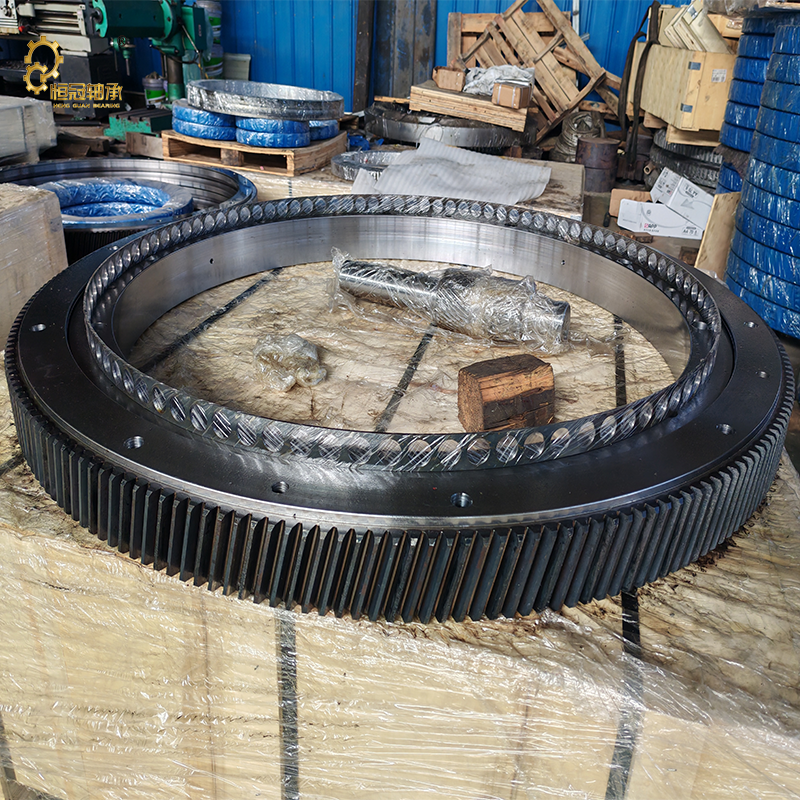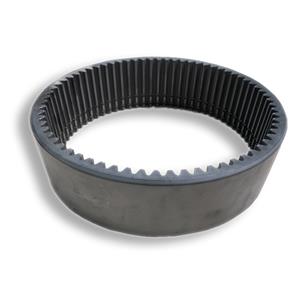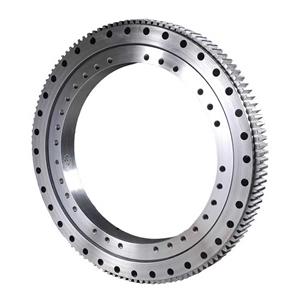Difference between slewing bearing and ordinary bearing
Difference between slewing bearing and ordinary bearing
Slewing bearing, also known as turntable bearing (English name: slewing bearing), is a large bearing that can withstand comprehensive loads. It can withstand large axial, radial loads and overturning moments at the same time, and is called "machine joints".
Unlike ordinary bearings, slewing bearings generally have mounting holes, internal or external gears, lubricating oil holes and sealing devices, so that the main engine design structure is compact, easy to guide and easy to maintain.
Slewing bearings are widely used in engineering machinery, aerial machinery, handling equipment, automation machinery, special vehicles, new energy equipment, ship equipment, lifting equipment, hoisting equipment and other fields.
1. Classification of slewing bearings
Slewing bearings are generally divided into four series:
(1) External gear type
Single row roller external gear type, double row ball external gear type, single row ball external gear type
(2) Internal gear type
Single row roller internal gear type, double row ball internal gear type, single row ball internal gear type
(3) No gear type
Single row roller no gear type, double row ball no gear type, single row ball no gear type
(4) Flange type
U-type internal gear single ball type, Z-type no gear single ball type, Z-type internal gear single ball type, Z-type external gear single ball type, U-type no gear single ball type.

2. Differences between slewing bearings and ordinary bearings
Slewing bearings, like bearings, have rolling elements and raceways. However, compared with ordinary rolling bearings, they have many differences, mainly the following 6 points:
(1) The size of slewing bearings is relatively large, and its diameter is usually 0.4-10 meters, and some have a diameter as large as 40 meters.
(2) Slewing bearings generally have to bear several loads, not only axial force and radial force, but also large overturning moment. Therefore, a set of slewing bearings often plays the role of several sets of ordinary rolling bearings.
(3) The operating speed of slewing bearings is relatively low, usually below 50 rpm. In many cases, slewing bearings do not operate continuously, but only rotate back and forth within an angle, which is equivalent to the so-called "swing bearing".
(4) In terms of manufacturing processes such as materials and heat treatment, slewing bearings are very different from rolling bearings.
(5) Usually, slewing bearings are equipped with gear rings for rotary drive and sealing devices for dust prevention.
(6) The installation method is different. Unlike ordinary bearings, slewing bearings are not mounted on the spindle and installed in the bearing box, but are fixed to the upper and lower supports with screws.




